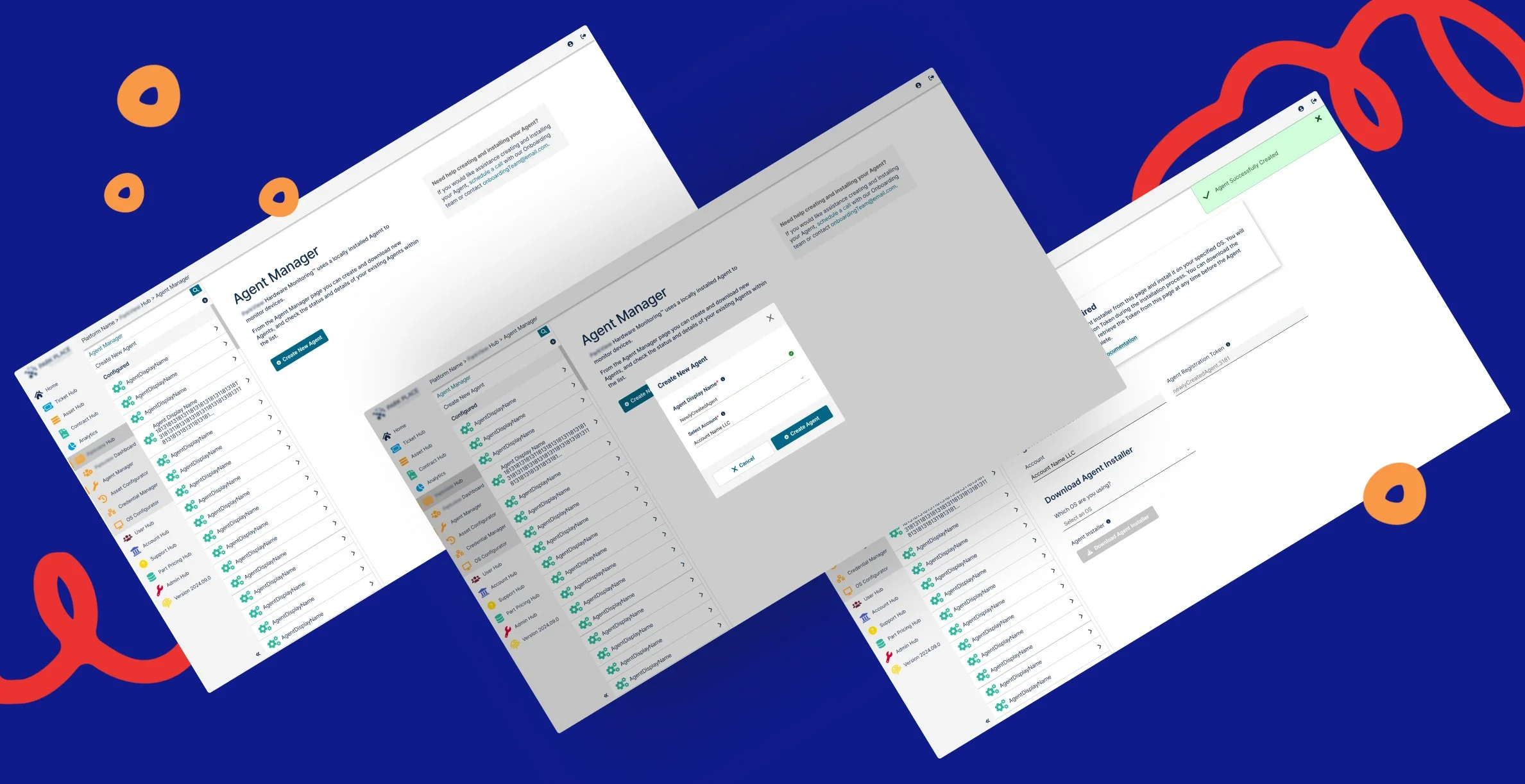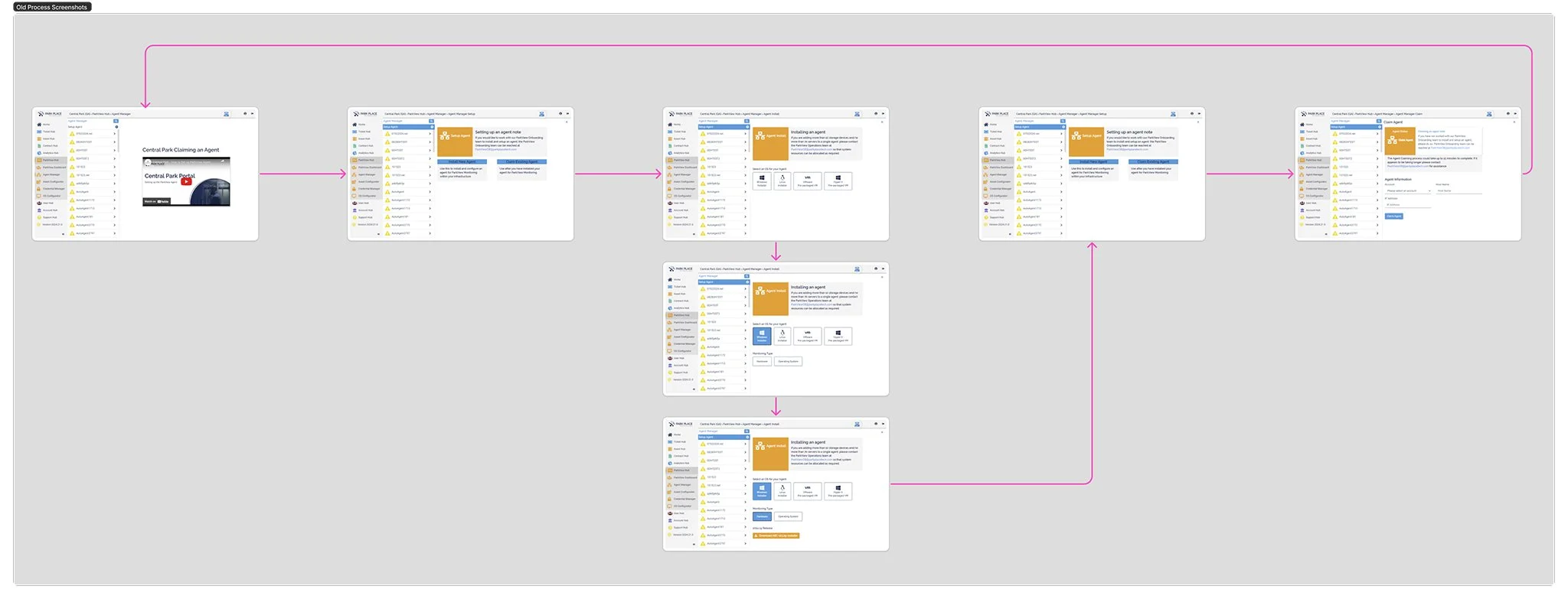Agent Creation Workflow Redesign
Simplifying IT Monitoring Setup for B2B Support
My Role: UX/UI Designer | Company: Park Place Technologies | Year: 2024
Project Impact
The agent creation redesign was a critical component of the company's platform migration strategy, contributing to:
$5M
In licensing fee savings
(company-wide platform migration)
75%
Reduction in infrastructure costs
(overall platform modernization)
My Design Contribution
Eliminated training requirement. Users can now create agents independently without documentation
Streamlined complex workflow. Reduced multi-step fragmented process to single guided flow
Validated design decisions through testing. Ensured intuitive experience for varied user skill levels
Enabled successful platform adoption. Simplified agent creation removed a key migration barrier
The Problem
The company was migrating from an expensive third-party IT monitoring platform to a custom solution. The legacy system's agent creation process was a major adoption barrier. It required users to navigate through disconnected screens, interpret unclear technical language, and often resulted in errors that required support intervention.
Users: IT administrators, data center technicians, and field engineers responsible for monitoring hardware assets.
The challenge: Design an intuitive agent creation flow that would enable users to adopt the new platform confidently without extensive training or support.
Five disconnected steps forced users through a confusing multi-screen journey
Research & Discovery
Heuristic Analysis: I conducted a systematic evaluation of the legacy interface using established UX principles. This revealed several critical usability issues:
Fragmented workflow split across multiple disconnected screens
Disruptive modal dialogs that interrupted user flow
Dense navigation with 20+ options competing for attention
Technical jargon without contextual explanations
Unclear visual hierarchy and next-step indicators
Stakeholder Interviews: I spoke with internal team members who had direct user insights, including support staff and product experts, to understand common pain points and frequent support requests related to agent creation.
Key Insights:
Users frequently got stuck during the multi-step claiming and configuration process
The entry point for agent creation was hard to locate in the dense navigation
Technical terminology like "registration token" confused less experienced users
Error messages didn't provide clear guidance on how to resolve issues
Design Process
I mapped the existing user journey to identify opportunities to simplify and streamline the experience. My goal was to create a single, guided workflow that combined the fragmented steps into one intuitive process.
Early iterations focused on consolidating the claiming and configuration steps, introducing progressive disclosure to reduce cognitive load, and adding contextual help to explain technical concepts.
Mid-fidelity prototypes were reviewed with the product and engineering teams. Collaboration with stakeholders helped refine the language, improve the information hierarchy, and ensure technical feasibility.
Mid-fidelity prototype incorporating stakeholder feedback and design refinements
Usability Testing: During the design phase, I conducted testing to validate key design decisions. One specific question was around status indication: whether pending agent configurations should use yellow (alert/attention) or gray (neutral/passive) styling. Testing confirmed that yellow was more effective because it appropriately signaled that user action was needed to complete setup. Gray appeared too passive and caused users to overlook incomplete configurations.
Testing with 6 participants revealed that yellow status indicators were perceived as more urgent and action-oriented than gray and blue alternatives
The Solution
I designed a streamlined, modal-based workflow that guides users through agent creation in clear, sequential steps:
Unified workflow: Combined the fragmented claiming and configuration processes into one focused experience
Progressive disclosure: Presented only relevant information at each step to reduce overwhelm
Contextual guidance: Added tooltips and help text to explain technical concepts like registration tokens
Clear visual signaling: Used appropriate color coding (yellow for pending actions) to draw attention to required steps
Accessible entry point: Created a dedicated Agent Manager landing page with clear call-to-action
Real-time feedback: Included validation to help users catch and correct errors immediately
The interface prioritizes clarity and guidance, transforming a complex technical process into something approachable for users with varying skill levels.
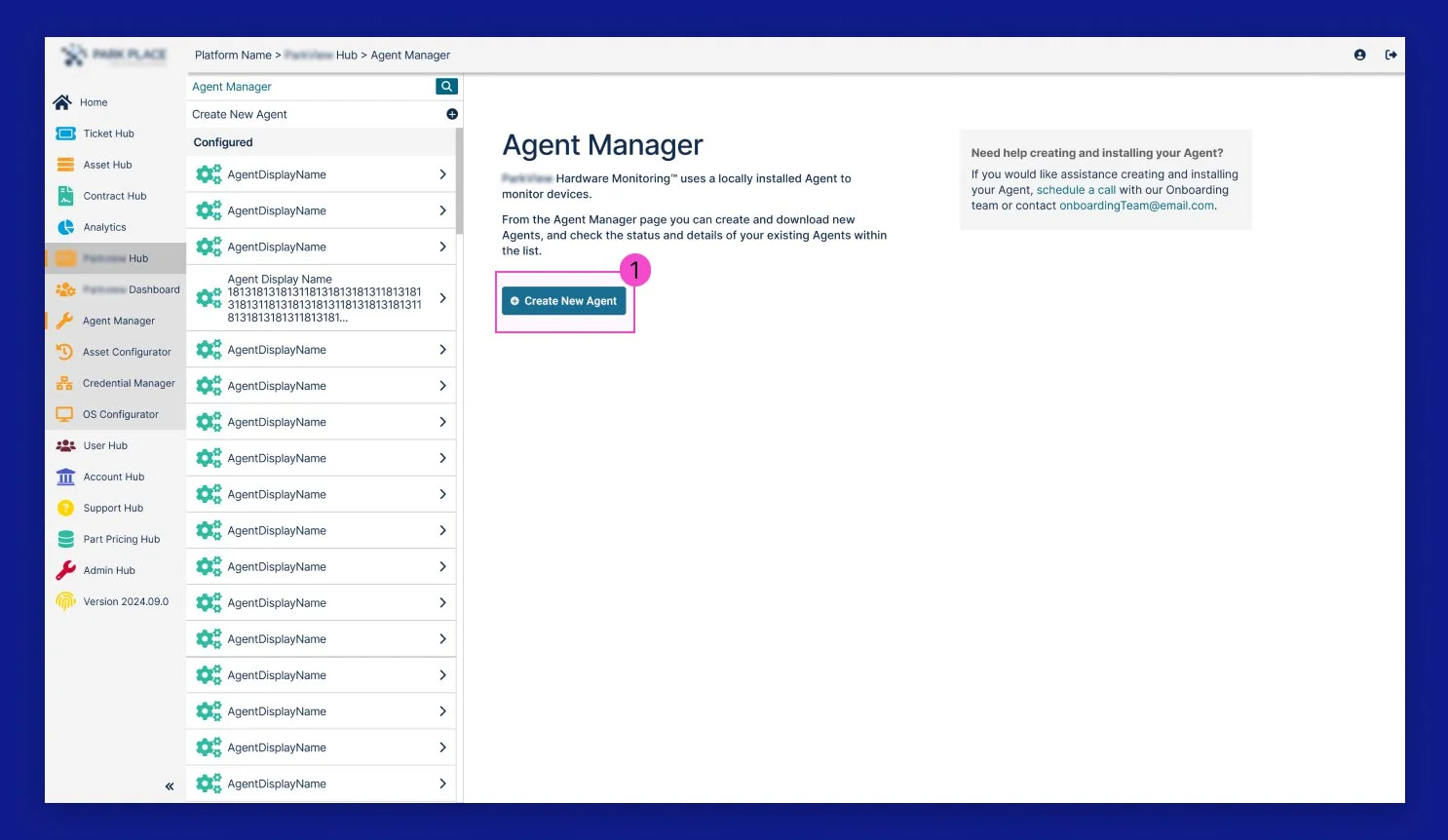
1: Clear entry point eliminates navigation confusion
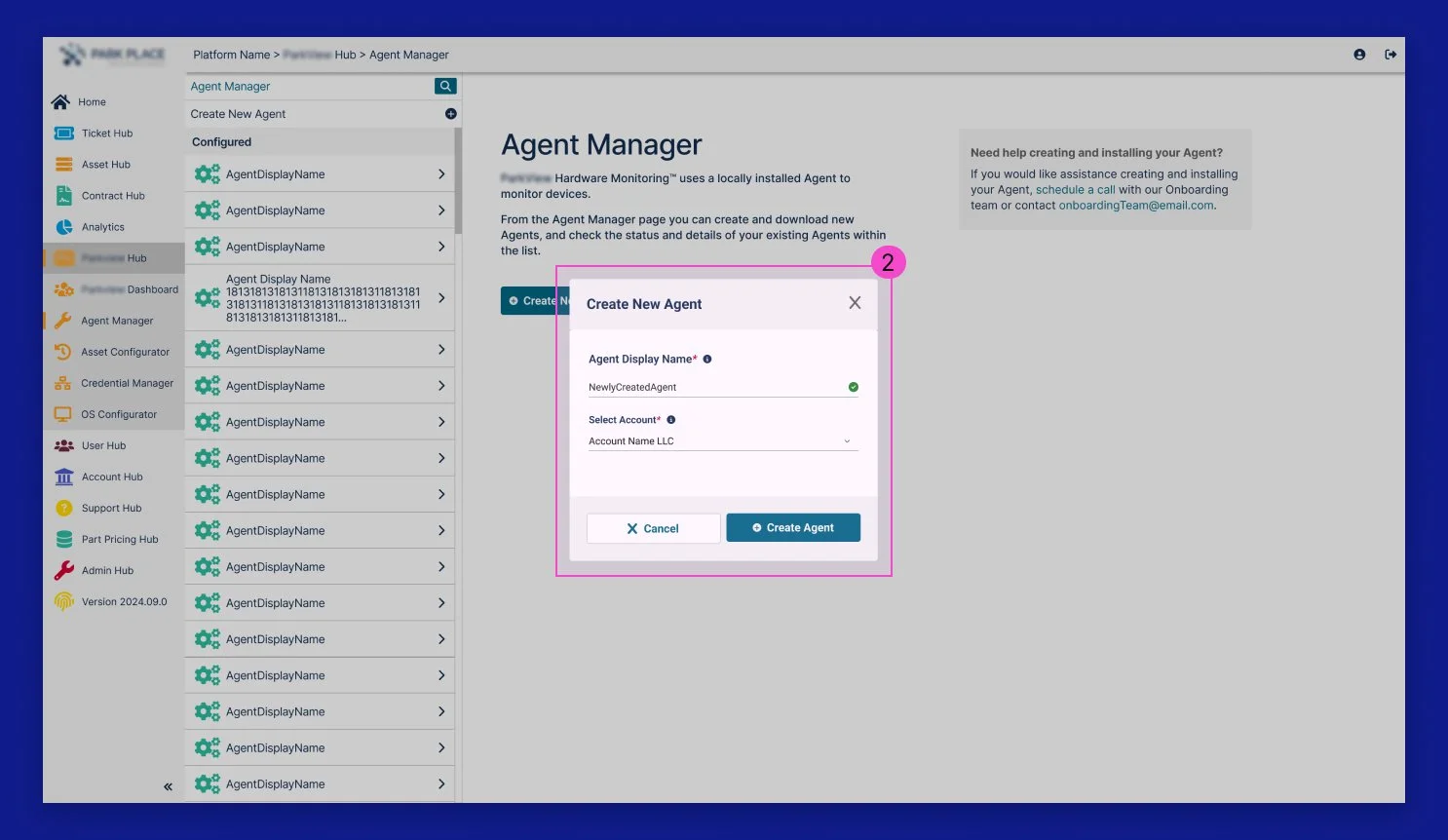
2: Unified workflow simplifies the claiming and configuration process

3: Progressive disclosure reduces cognitive load with focused fields
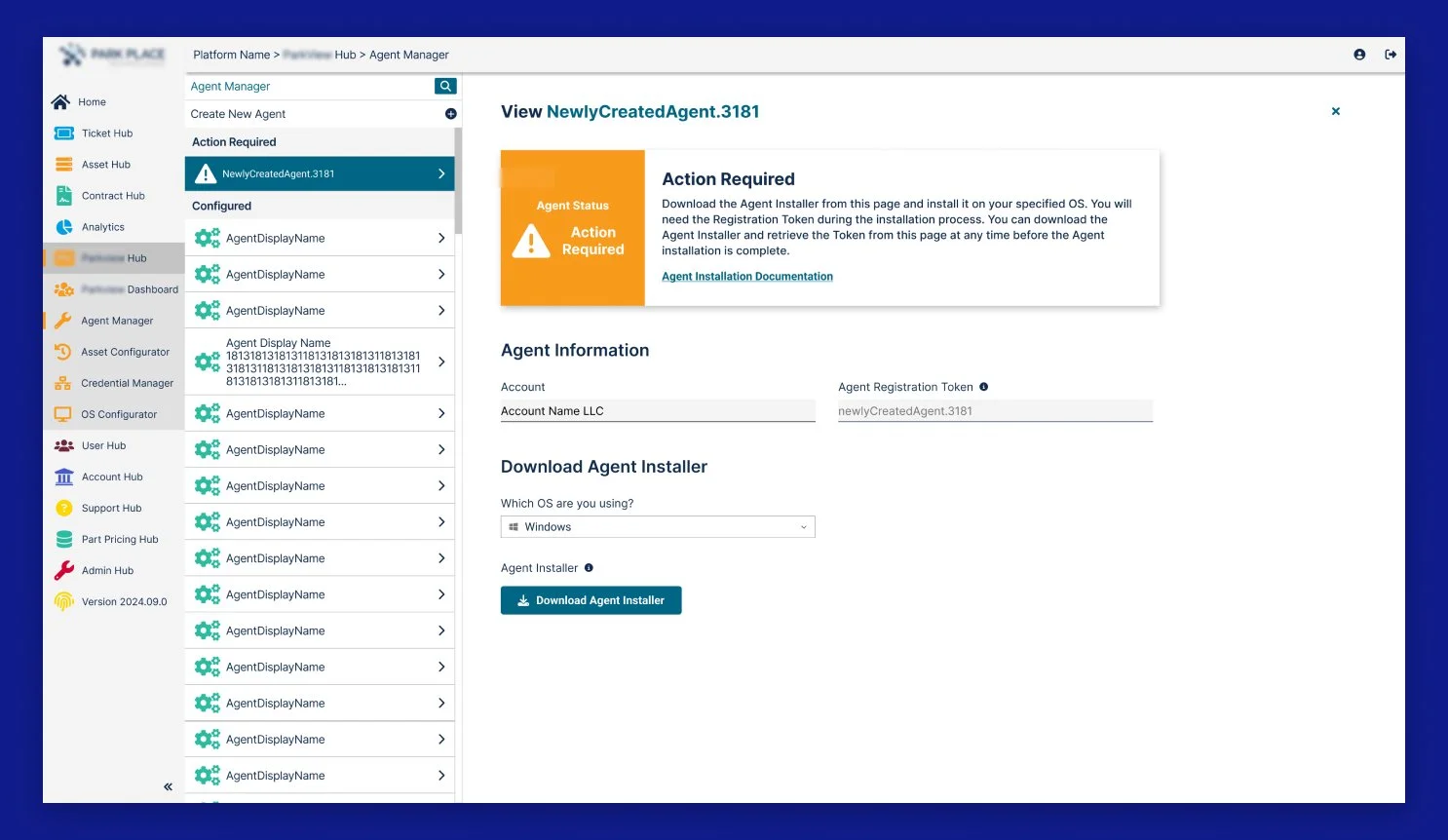
3: Progressive disclosure reduces cognitive load with focused fields

4: Clear call-to-action confirms successful completion and next steps
Results & Impact
The redesigned agent creation flow was successfully integrated into the new monitoring platform, directly supporting the company's migration away from the legacy system.
Measurable outcomes:
No training required. Users can independently create agents without documentation or onboarding
Intuitive self-service. Design enabled confident adoption across user skill levels
Removed migration barrier. Simplified agent setup accelerated platform adoption
Contributed to cost savings. Enabled successful migration that resulted in $5M in licensing savings and 75% infrastructure cost reduction
Reflection
This project reinforced that even highly technical enterprise workflows can be made intuitive through thoughtful design. By focusing on reducing cognitive load, providing contextual guidance, and validating decisions with real users, I was able to transform a frustrating process into a confident experience.
Key Lesson:
Strategic UX design doesn't just improve usability. It can remove critical barriers to business goals like platform migrations and cost optimization.

